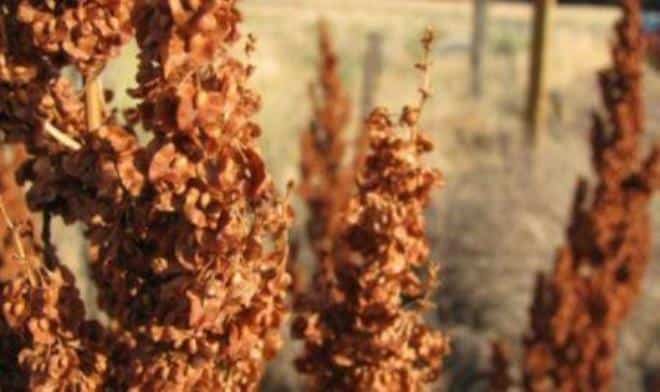Yellow Dock, or Indian Rhubarb, is most commonly mistaken for a weed, but once properly identified, it can be used for a variety of different purposes. The stem of Yellow Dock can grow up to one to three feet tall and has long, arrow-shaped leafs. Its name comes from the roots, which are four to eight inches long, and they have dark red bark and are yellow inside. The plant is most commonly seen in moist areas, such as along the northwestern coast of North America.
Yellow Dock has a rich history in First Nations culture. While all parts of the plant can be consumed, the roots of Yellow Dock are used widely among Indigenous groups of North America as medicine. The root of the Yellow Dock should be harvested in summer and fall before it begins to seed. Traditionally used for its cleansing and detoxification properties, Yellow Dock is still commonly used today in homeopathic and naturopathic medicine. First Nations tribes have turned the plant into tinctures, compresses, and teas that can help with skin aliments, digestive issues, or used externally for swelling and pain.
The leaves of the plant can be harvested, but should be cooked before being consumed due to oxalic acid within the leaves. Once cooked, the leaves can be used as a substitute for spinach. When Yellow Dock seeds, the plant turns a distinctive dark red. The seeds of the Yellow Dock can be used in oatmeal or in crackers. The Haida First Nations people made Yellow Dock stems into a jam which was sometimes mixed in with wild strawberries.












